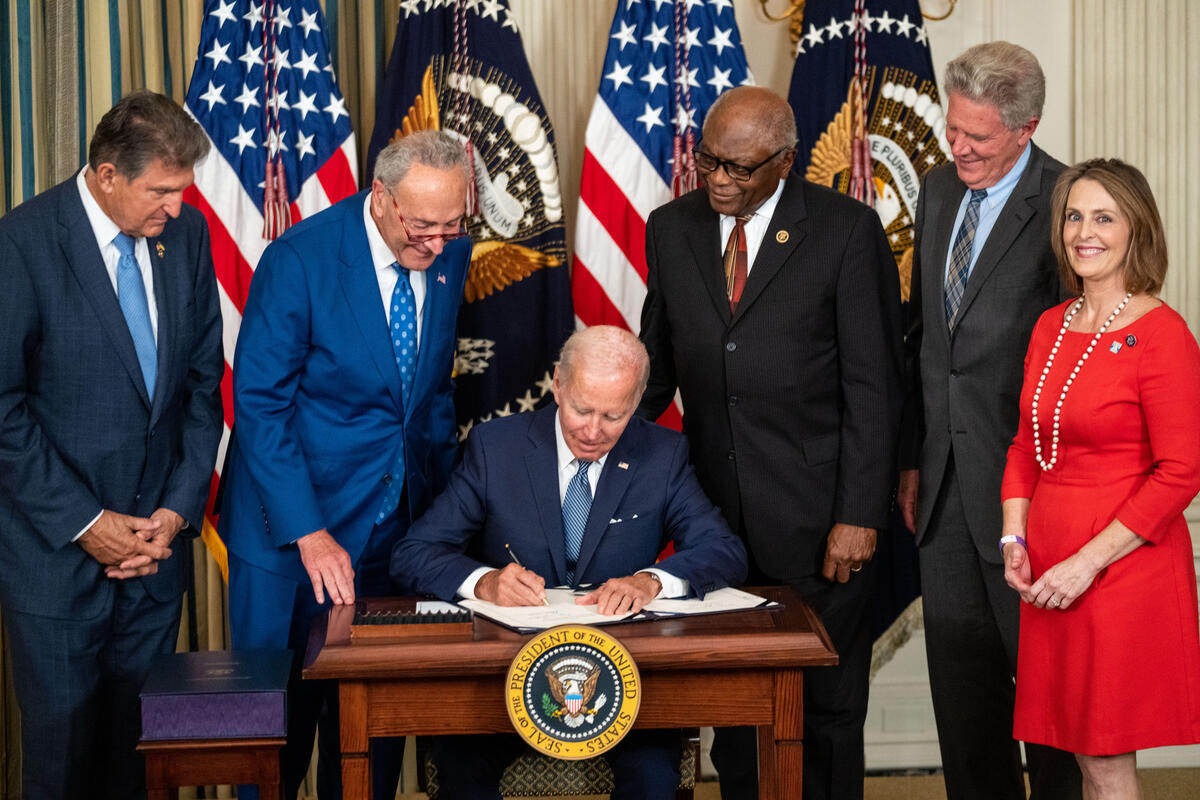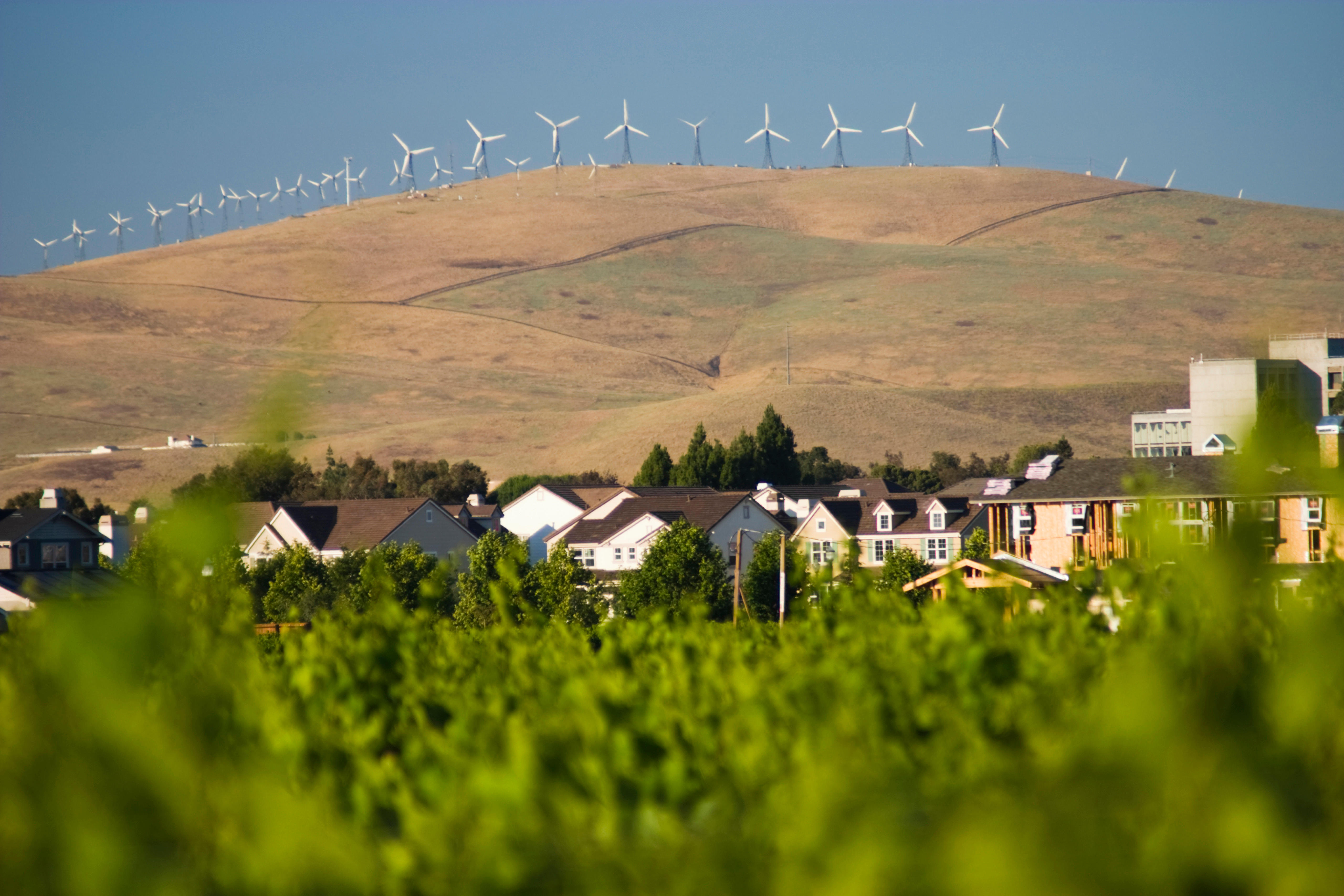These four states are winning on climate. And they're not all the ones you'd expect
The passage of the bipartisan Infrastructure Bill and then the Inflation Reduction Act let loose nearly half a trillion dollars to fight climate change in 2022.

But with control of Congress once again split, hope for climate action is shifting back to the states.
“It’s up to states now to seize on the opportunities made possible by the Inflation Reduction Act," says Steve Cochran, head of state affairs at Environmental Defense Fund.
Nearly half of U.S. states have committed to reduce greenhouse gas pollution in line with the nation’s pledge under the Paris Agreement.
If those states make good on those promises, the country as a whole could almost halve what is known as the emissions gap – the difference between where emissions are headed now and where we need them to be to stabilize the climate.
Here are four states to watch in 2023:
Pennsylvania: Sealing the deal
Last spring, Pennsylvania made history by becoming the first major fossil fuel producing state to finalize the regulations to join the Regional Greenhouse Gas Initiative, a multi-state carbon cap-and-invest program that slashes climate pollution from the power sector.

Obstructed at every turn by fossil fuel special interests, it took then Gov. Tom Wolf (D) almost three years to secure that victory.
But the saga is far from over. The rules face multiple challenges in state courts and Pennsylvania can’t officially participate in, or benefit from, the program until the cases are decided.
All eyes are now on newly elected Gov. Josh Shapiro (D) to get this critical regulation across the finish line.
That means vigorously defending it in court and then swiftly implementing the plan. During the campaign, Gov. Shapiro re-committed to strong climate goals and indicated he would evaluate RGGI after he took office.
Participating in RGGI would cut carbon pollution from power plants by roughly 188 million tons over the next 10 years and save more than 630 lives thanks to cleaner air.
New York: Going all in
New York has long been a leader when it comes to climate action. But the Empire State isn’t resting on its laurels.
Two and a half years ago, New York passed an ambitious climate law, requiring the state to reduce greenhouse gas emissions 85% by 2050. Now, Gov. Kathy Hochul (D) has unveiled how her administration intends to get there: a sweeping, economy-wide cap-and-invest program.

The program would put a declining limit, or “cap”, on carbon pollution from the state’s major pollution sources, and charge businesses for every ton they pollute under that limit. The revenue from the program would be invested in efforts to help slash climate pollution, like installing EV charging stations and weatherizing buildings.
Importantly, 40% of those investments would be earmarked for disadvantaged communities.
California and Washington have similar programs, but New York has an opportunity, through collaboration and inclusion, to create an innovative model that puts equity at the center of how the program is designed. The devil is in the details though, and 2023 will see those hammered out.
California: Leader of the pack
In 2023, the wave of historic climate laws California passed last year officially come into effect.
Last fall, in a legislative frenzy, California passed some of the nation’s most aggressive climate measures in history. While most other governments pat themselves on the back for aspiring to reach net-zero by 2050, California has committed to reaching this goal by 2045.

This year the Golden State is also expected to tighten the limit it places on emissions as part of its cap-and-trade program to help ensure the state meets its new climate ambitions.
Importantly, the new law stipulates that there must be at least an 85% reduction in direct emissions to meet this target. That means California won’t just be depending on carbon dioxide removal or carbon credits to balance its carbon checkbook.
At the same time, California is preparing for a future that almost inevitably includes using carbon capture technology as part of the solution to help stabilize the climate.
Everyone will be watching how California implements its new law establishing a framework for responsibly deploying carbon capture technologies. This includes banning the practice of injecting carbon dioxide underground if the sole purpose is to extract even more fossil fuels and ensuring that communities already overburdened by pollution are protected as the race to get carbon back in the ground kicks off.
Louisiana: Out with the old, in with the new
Louisiana is more often found on lists of states embroiled in lawsuits opposing federal climate action, than on lists to watch for climate progress. It’s a deep red state with a Democratic governor and a front row seat to the devastating impacts of climate change.
But last December, there was an important shakeup at the obscure, but powerful five-member Public Service Commission which governs the state’s utilities and decides what energy infrastructure is built and how much ratepayers are charged.

Local community groups, tired of unreliable service and volatile prices, unseated commissioner Lambert Boissiere III, who had served for nearly two decades. The new incumbent, political newcomer Davante Lewis, has pledged to help chart a new course for Louisiana, which currently ranks dead last in the nation for renewable energy production. He has vowed to push for expanding renewable energy, creating a bill of rights for ratepayers and prohibiting commissioners from accepting political contributions from the companies they regulate.
Utility giant Entergy helped fund Lewis’ opponent’s campaign. The commission has long been a roadblock to Louisiana’s renewable energy transition, but with a majority of commissioners now interested in moving Louisiana in a cleaner direction, 2023 could bring real change.










